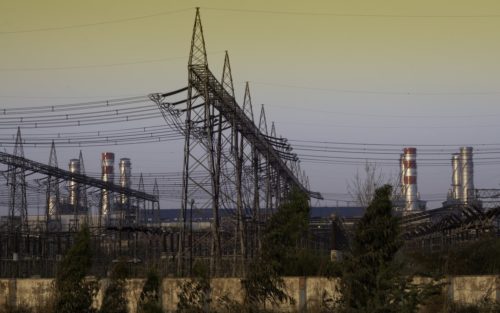Rural Indian electric power plant.

Report | 2024
Transforming Delhi’s Power Grid
A Comprehensive Guide to Enhancing Flexibility
Delhi, projected to be the world’s largest metropolitan area by 2030, faces significant challenges due to rapid urbanization and an increasing demand for electricity, particularly at peak times. Delhi’s peak electricity demand is projected to grow by 50 percent over this decade, with renewable energy expected to account for 50 percent of the city’s power supply during the same period. This surge in demand and the shift toward renewables highlight a critical need to enhance grid flexibility — the ability of a power system to maintain continuous reliable service in the face of rapid and large swings in supply or demand.
Transforming Delhi’s Power Grid: A Comprehensive Guide to Enhancing Flexibility provides a thorough assessment of Delhi’s current and projected electricity demand and supply mix by 2030, identifying the drivers behind the peak demands — primarily the growing demand for space cooling, personal electric vehicles (EVs), and electric buses. The unmanaged demand growth poses challenges, and managing these demands under the current infrastructure is costly. These challenges could be mitigated with grid flexibility measures, such as demand response (DR) programs, managed EV charging, battery energy storage systems (BESS), and virtual power plants (VPPs).
- Demand Response Programs: These programs can significantly mitigate the increasing demand peaks by incentivizing consumers to shave or shift their electricity load during peak hours.
- Managed Charging of Electric Vehicles: This involves shifting the charging times of the electric bus fleet to off-peak hours, thus flattening the demand curve and reducing stress on the grid.
- Battery Energy Storage Systems: Distribution and customer-sited BESS can provide critical services like load shifting, peak shaving, and distribution deferral, which are essential for integrating renewable energy resources and managing peak demand.
- Virtual Power Plants: Combining DR, managed EV charging, and BESS can create VPPs that aggregate and optimize distributed energy resources, providing a significant tool for grid management.
The report estimates that Delhi could reduce 250–1,350 MW of peak demand through air conditioning DR programs, manage up to 400 MW of demand through electric bus fleet charging, and shift 500–2,500 MW of demand through BESS. Combined as VPPs, these measures could reduce demand by nearly 4,000 MW, about one-third of Delhi’s projected peak demand in 2030.
The implementation of these flexibility measures not only supports the stability of the grid but also offers substantial economic benefits. For instance, the annual net benefits to Delhi’s distribution companies from these measures could reach up to ₹1,400 crore per annum (or equivalent savings of ₹2000 per electricity consumer per year in Delhi). Moreover, these initiatives contribute to environmental sustainability by facilitating the integration of more renewable energy into the grid, thus reducing reliance on fossil fuels and decreasing greenhouse gas emissions.
Grid flexibility solutions need to be scaled up effectively to realize these significant benefits. Essential strategies include:
- A standardized cost-effectiveness evaluation framework to assess the potential and impact of grid flexibility measures
- Regulatory sandbox experimentation and pilot projects to validate the effectiveness of these measures before wider implementation.
- Scaling up grid flexibility programs to meet the growing energy demands without compromising reliability and affordability.
As Delhi moves toward a more sustainable and resilient energy future, the role of grid flexibility becomes increasingly crucial. The insights from the report provide a clear pathway for policymakers, businesses, and communities to collaborate in transforming the city’s power grid. By adopting and scaling up grid flexibility measures, Delhi can ensure a reliable, affordable, and sustainable energy supply for its residents, setting a benchmark for other cities across India and the world.
